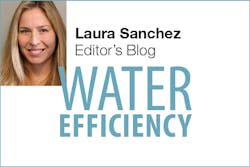Although towing an iceberg from Antarctica to South Africa to relieve drought-plagued Cape Town sounds far-fetched, or like the plot of a summer blockbuster movie, it’s a solution that experts in South Africa are seriously considering.
Marine salvage expert, Nick Sloane, who in 2014 successfully refloated the capsized Italian passenger ship Costa Concordia, has developed a proposal that involves wrapping icebergs in protective material and transporting them, via tanker and ocean current, 2,000 kilometers south to Cape Town where they would be melted to provide drinking water for residents.
According to Sloane, a single iceberg “could produce about 150 million liters per day for about a year,” around 30 percent of the city’s needs. He specifies that the ideal iceberg dimensions would be about a kilometer long, 500 meters wide, and 250 meters deep with a flat surface.
But towing an iceberg would be costly. Current estimates are upwards of $100 million. Therefore, South African officials are currently monitoring rainfall to see if the conveyance procedure is entirely necessary. They plan on reaching a decision in August.
“We’ve got private investors standing by on the wings to fund it,” Sloane told Quartz. Under that arrangement, the salvage expert and his partners would only charge a delivery fee if the operation is successful.
The idea of towing an iceberg to provide fresh water is nothing new. As The Atlantic outlines here, for nearly 200 years forward-thinking individuals have suggested iceberg transport to arid regions such as the United Arab Emirates, India, and California. But despite all the proposals and planning, there has yet to be a successful effort to capture and tow and iceberg for fresh water.
Towing icebergs is a regular practice for oil companies operating offshore rigs in northern waters. In fact, in order to protect their assets, many hire ice management consultants to keep icebergs clear of valuable equipment. These contractors have developed techniques for capturing the floating ice using 8-inch polypropylene towropes to encircle the iceberg and a powerful vessel to shift the iceberg’s path.
What are your thoughts? With much of the world’s fresh water locked away in Arctic icebergs, is it practical to bring colossal chunks of ice down to latitudes where people desperately need new sources of drinking water? Is iceberg towing a preposterous or possible solution?
